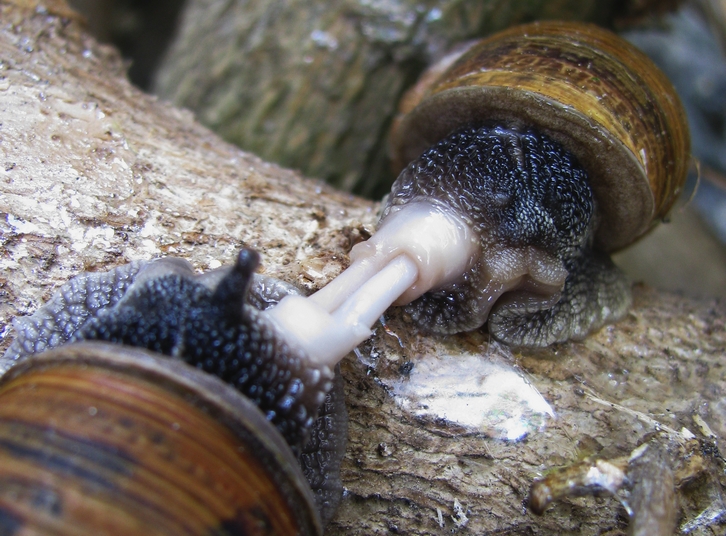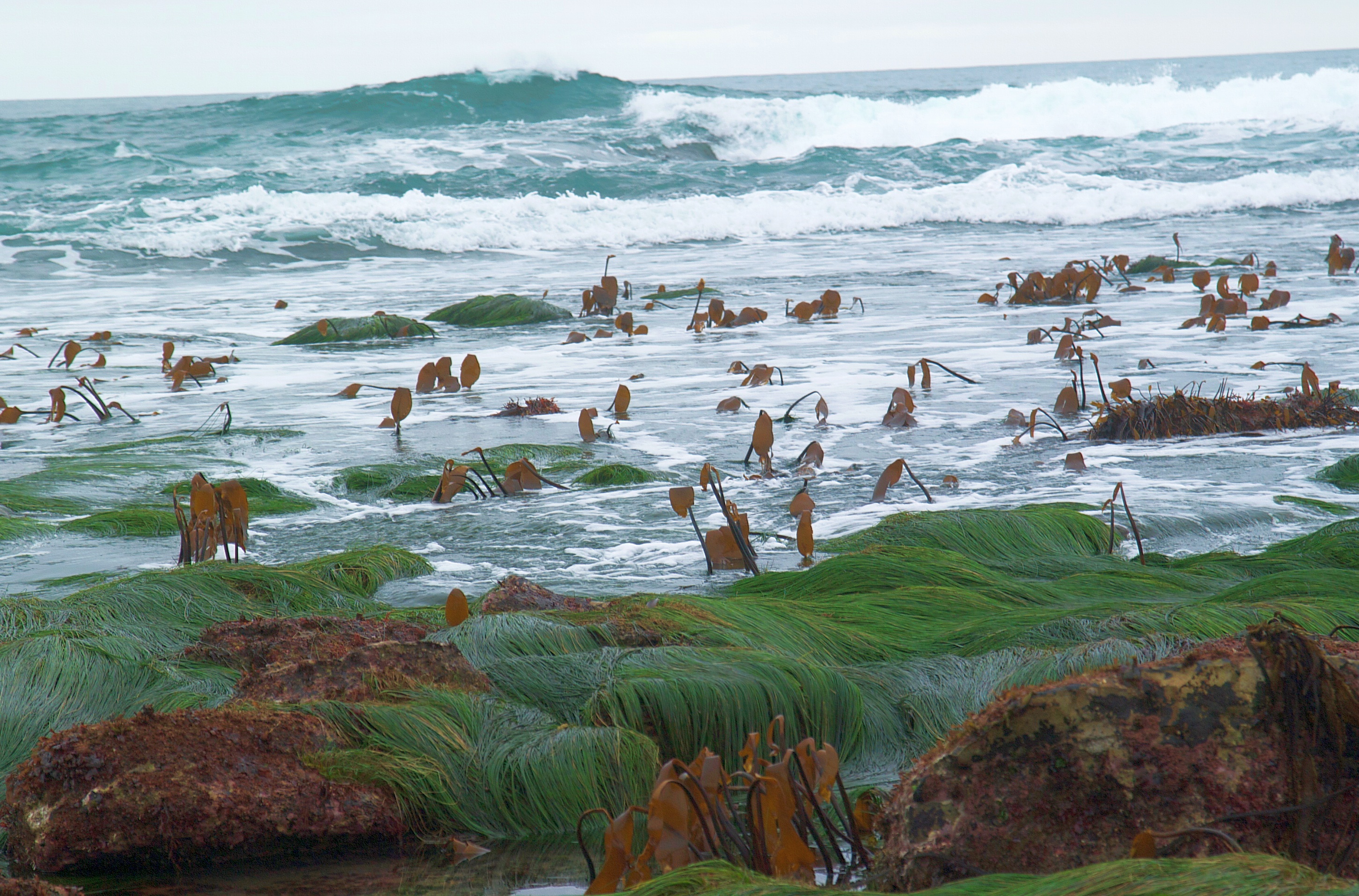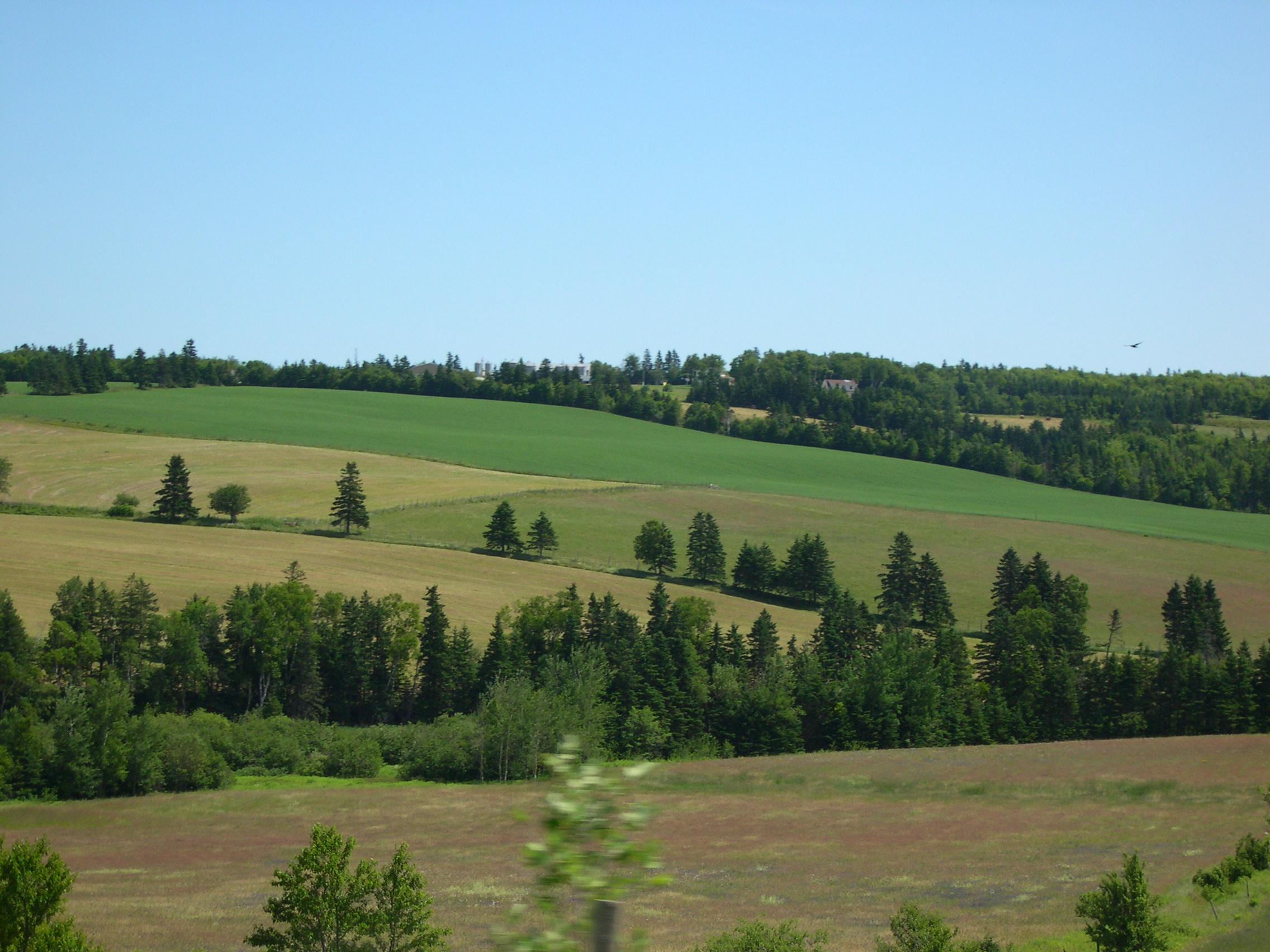|
Spirorbis Borealis
''Spirorbis borealis'' is a sedentary marine polychaete worm in the Serpulidae family. It is commonly called the sinistral spiral tubeworm and is the type species of the genus ''Spirorbis''. Polychaetes, or marine bristle worms, have elongated bodies divided into many segments. Each segment may bear setae (bristles) and parapodia (paddle-like appendages). Some species live freely, either swimming, crawling or burrowing, and these are known as "errant". Others live permanently in tubes, either calcareous or parchment-like, and these are known as "sedentary". Description ''S. borealis'' secretes a very small, unridged, off-white, calcareous tube. This is about five millimetres in diameter and forms a flat, clockwise spiral coil as seen from above. The worm retreats into its tube when above water but under water can be seen to have green tentacles.John Barrett and C M Young, Collins Pocket Guide to the Sea Shore (1958) p.76 Distribution and habitat ''S. borealis'' is found o ... [...More Info...] [...Related Items...] OR: [Wikipedia] [Google] [Baidu] |
François Marie Daudin
François Marie Daudin (; 29 August 1776 in Paris – 30 November 1803 in Paris) was a French zoologist. With legs paralyzed by childhood disease, he studied physics and natural history, but ended up being devoted to the latter. Daudin wrote ' (Complete and Elementary Treatise of Ornithology) in 1799–1800. It was one of the first modern handbooks of ornithology, combining Linnean binomial nomenclature with the anatomical and physiological descriptions of Buffon. While an excellent beginning, it was never completed. In 1800, he also published ''Recueil de mémoires et de notes sur des espèces inédites ou peu connues de mollusques, de vers et de zoophytes'' (Collection of memories and notes on new or little-known species of molluscs, worms and zoophytes). Daudin found his greatest success in herpetology. He published ''Histoire naturelle des reinettes, des grenouilles et des crapauds'' (Natural history of tree frogs, frogs and toads) in 1802, and ''Histoire naturelle, g ... [...More Info...] [...Related Items...] OR: [Wikipedia] [Google] [Baidu] |
Portugal
Portugal, officially the Portuguese Republic, In recognized minority languages of Portugal: :* mwl, República Pertuesa is a country located on the Iberian Peninsula, in Southwestern Europe, and whose territory also includes the Macaronesian archipelagos of the Azores and Madeira. It features the westernmost point in continental Europe, its mainland west and south border with the North Atlantic Ocean and in the north and east, the Portugal-Spain border, constitutes the longest uninterrupted border-line in the European Union. Its archipelagos form two autonomous regions with their own regional governments. On the mainland, Alentejo region occupies the biggest area but is one of the least densely populated regions of Europe. Lisbon is the capital and largest city by population, being also the main spot for tourists alongside Porto, the Algarve and Madeira. One of the oldest countries in Europe, its territory has been continuously settled and fought over since prehistoric tim ... [...More Info...] [...Related Items...] OR: [Wikipedia] [Google] [Baidu] |
Gonad
A gonad, sex gland, or reproductive gland is a mixed gland that produces the gametes and sex hormones of an organism. Female reproductive cells are egg cells, and male reproductive cells are sperm. The male gonad, the testicle, produces sperm in the form of spermatozoa. The female gonad, the ovary, produces egg cells. Both of these gametes are haploid cells. Some hermaphroditic animals have a type of gonad called an ovotestis. Evolution It is hard to find a common origin for gonads, but gonads most likely evolved independently several times. Regulation The gonads are controlled by luteinizing hormone and follicle-stimulating hormone, produced and secreted by gonadotropes or gonadotrophins in the anterior pituitary gland. This secretion is regulated by gonadotropin-releasing hormone produced in the hypothalamus. Development Gonads start developing as a common primordium (an organ in the earliest stage of development), in the form of genital ridges, which ar ... [...More Info...] [...Related Items...] OR: [Wikipedia] [Google] [Baidu] |
Hermaphrodite
In reproductive biology, a hermaphrodite () is an organism that has both kinds of reproductive organs and can produce both gametes associated with male and female sexes. Many taxonomic groups of animals (mostly invertebrates) do not have separate sexes. In these groups, hermaphroditism is a normal condition, enabling a form of sexual reproduction in which either partner can act as the female or male. For example, the great majority of tunicates, pulmonate molluscs, opisthobranch, earthworms, and slugs are hermaphrodites. Hermaphroditism is also found in some fish species and to a lesser degree in other vertebrates. Most plants are also hermaphrodites. Animal species having different sexes, male and female, are called gonochoric, which is the opposite of hermaphrodite. There are also species where hermaphrodites exist alongside males (called androdioecy) or alongside females (called gynodioecy), or all three exist in the same species (called trioecy); these three ... [...More Info...] [...Related Items...] OR: [Wikipedia] [Google] [Baidu] |
Laminaria
''Laminaria'' is a genus of brown seaweed in the order Laminariales (kelp), comprising 31 species native to the north Atlantic and northern Pacific Oceans. This economically important genus is characterized by long, leathery laminae and relatively large size. Some species are called Devil's apron, due to their shape, or sea colander, due to the perforations present on the lamina. Others are referred to as ''tangle''. ''Laminaria'' form a habitat for many fish and invertebrates. The life cycle of ''Laminaria'' has heteromorphic alternation of generations which differs from '' Fucus''. At meiosis the male and female zoospores are produced separately, then germinate into male and female gametophytes. The female egg matures in the oogonium until the male sperm fertilizes it. Life-Cycle: The most apparent form of ''Laminaria'' is its sporophyte phase, a structure composed of the holdfast, the stipe, and the blades. While it spends its time predominately in the sporophyte pha ... [...More Info...] [...Related Items...] OR: [Wikipedia] [Google] [Baidu] |
Fucus
''Fucus'' is a genus of brown algae found in the intertidal zones of rocky seashores almost throughout the world. Description and life cycle The thallus is perennial with an irregular or disc-shaped holdfast or with haptera. The erect portion of the thallus is dichotomous or subpinnately branched, flattened and with a distinct midrib. Gas-filled pneumatocysts (air- vesicles) are present in pairs in some species, one on either side of the midrib. The erect portion of the thallus bears cryptostomata and caecostomata (sterile surface cavities). The base of the thallus is stipe-like due to abrasion of the tissue lateral to the midrib and it is attached to the rock by a holdfast. The gametangia develop in conceptacles embedded in receptacles in the apices of the final branches. They may be monoecious or dioecious. These algae have a relatively simple life cycle and produce only one type of thallus which grows to a maximum size of 2 m. Fertile cavities, the conceptacles, ... [...More Info...] [...Related Items...] OR: [Wikipedia] [Google] [Baidu] |
Gulf Of St Lawrence
, image = Baie de la Tour.jpg , alt = , caption = Gulf of St. Lawrence from Anticosti National Park, Quebec , image_bathymetry = Golfe Saint-Laurent Depths fr.svg , alt_bathymetry = Bathymetry of the Gulf of St. Lawrence , caption_bathymetry = Bathymetry of the Gulf of St. Lawrence , location = , group = , coordinates = , type = Gulf , etymology = , part_of = , inflow = , rivers = , outflow = , oceans = , catchment = , basin_countries = CanadaSaint Pierre and Miquelon (France) , agency = , designation = , date-built = , engineer = , date-flooded = , length = , width = , area = , depth = , max-depth = , volume = , residence_time = , salinity ... [...More Info...] [...Related Items...] OR: [Wikipedia] [Google] [Baidu] |
Newfoundland And Labrador
Newfoundland and Labrador (; french: Terre-Neuve-et-Labrador; frequently abbreviated as NL) is the easternmost province of Canada, in the country's Atlantic region. The province comprises the island of Newfoundland and the continental region of Labrador, having a total size of 405,212 square kilometres (156,500 sq mi). In 2021, the population of Newfoundland and Labrador was estimated to be 521,758. The island of Newfoundland (and its smaller neighbouring islands) is home to around 94 per cent of the province's population, with more than half residing in the Avalon Peninsula. Labrador borders the province of Quebec, and the French overseas collectivity of Saint Pierre and Miquelon lies about 20 km west of the Burin Peninsula. According to the 2016 census, 97.0 per cent of residents reported English as their native language, making Newfoundland and Labrador Canada's most linguistically homogeneous province. A majority of the population is descended from English and Irish ... [...More Info...] [...Related Items...] OR: [Wikipedia] [Google] [Baidu] |
Prince Edward Island
Prince Edward Island (PEI; ) is one of the thirteen provinces and territories of Canada. It is the smallest province in terms of land area and population, but the most densely populated. The island has several nicknames: "Garden of the Gulf", "Birthplace of Confederation" and "Cradle of Confederation". Its capital and largest city is Charlottetown. It is one of the three Maritime provinces and one of the four Atlantic provinces. Part of the traditional lands of the Miꞌkmaq, it was colonized by the French in 1604 as part of the colony of Acadia. The island was ceded to the British at the conclusion of the French and Indian War in 1763 and became part of the colony of Nova Scotia, and in 1769 the island became its own British colony. Prince Edward Island hosted the Charlottetown Conference in 1864 to discuss a union of the Maritime provinces; however, the conference became the first in a series of meetings which led to Canadian Confederation in 1867. Prince Edward Island ... [...More Info...] [...Related Items...] OR: [Wikipedia] [Google] [Baidu] |
Spain
, image_flag = Bandera de España.svg , image_coat = Escudo de España (mazonado).svg , national_motto = '' Plus ultra'' ( Latin)(English: "Further Beyond") , national_anthem = (English: "Royal March") , image_map = , map_caption = , image_map2 = , capital = Madrid , coordinates = , largest_city = Madrid , languages_type = Official language , languages = Spanish , ethnic_groups = , ethnic_groups_year = , ethnic_groups_ref = , religion = , religion_ref = , religion_year = 2020 , demonym = , government_type = Unitary parliamentary constitutional monarchy , leader_title1 = Monarch , leader_name1 = Felipe VI , leader_title2 = Prime Minister , leader_name2 = Pedro Sánchez , legislature = ... [...More Info...] [...Related Items...] OR: [Wikipedia] [Google] [Baidu] |
Polychaeta
Polychaeta () is a paraphyletic class of generally marine annelid worms, commonly called bristle worms or polychaetes (). Each body segment has a pair of fleshy protrusions called parapodia that bear many bristles, called chaetae, which are made of chitin. More than 10,000 species are described in this class. Common representatives include the lugworm (''Arenicola marina'') and the sandworm or clam worm ''Alitta''. Polychaetes as a class are robust and widespread, with species that live in the coldest ocean temperatures of the abyssal plain, to forms which tolerate the extremely high temperatures near hydrothermal vents. Polychaetes occur throughout the Earth's oceans at all depths, from forms that live as plankton near the surface, to a 2- to 3-cm specimen (still unclassified) observed by the robot ocean probe ''Nereus'' at the bottom of the Challenger Deep, the deepest known spot in the Earth's oceans. Only 168 species (less than 2% of all polychaetes) are known fro ... [...More Info...] [...Related Items...] OR: [Wikipedia] [Google] [Baidu] |
Ireland
Ireland ( ; ga, Éire ; Ulster Scots dialect, Ulster-Scots: ) is an island in the Atlantic Ocean, North Atlantic Ocean, in Northwestern Europe, north-western Europe. It is separated from Great Britain to its east by the North Channel (Great Britain and Ireland), North Channel, the Irish Sea, and St George's Channel. Ireland is the List of islands of the British Isles, second-largest island of the British Isles, the List of European islands by area, third-largest in Europe, and the List of islands by area, twentieth-largest on Earth. Geopolitically, Ireland is divided between the Republic of Ireland (officially Names of the Irish state, named Ireland), which covers five-sixths of the island, and Northern Ireland, which is part of the United Kingdom. As of 2022, the Irish population analysis, population of the entire island is just over 7 million, with 5.1 million living in the Republic of Ireland and 1.9 million in Northern Ireland, ranking it the List of European islan ... [...More Info...] [...Related Items...] OR: [Wikipedia] [Google] [Baidu] |



.jpg)


